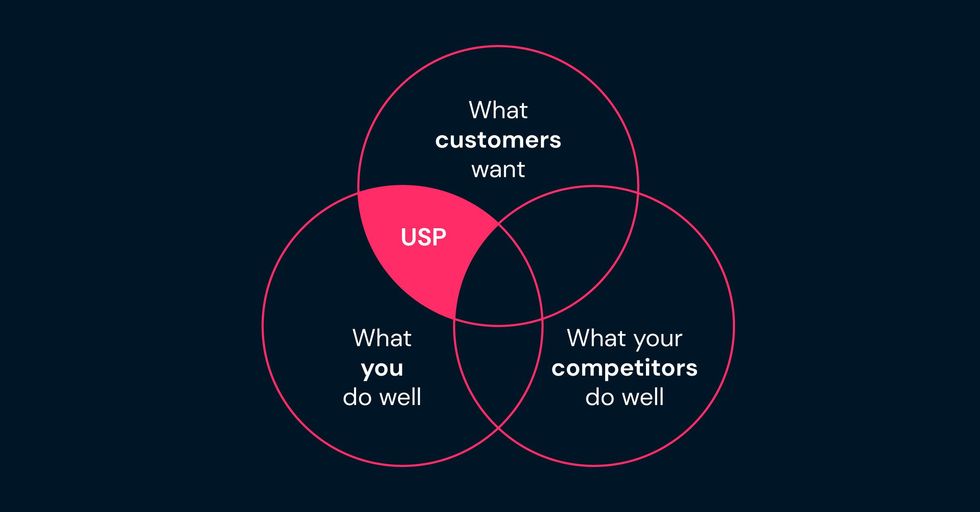Developing a powerful unique selling proposition (USP) can make your brand stand head and shoulders above the crowd. A USP makes a strong first impression with your customers, making it easy for them to purchase your brand over your competitors. Let's look at what a USP is, how to create one, characteristics, and examples of it.
What Is A Unique Selling Proposition?

A unique selling proposition can be referred to as a unique selling point but is more commonly referred to as USP. USP is the one thing that makes your brand unique, better, and distinctive to stand out from the competition. The best way to think about your USP is to view it from your customer's perspective: "Why should I choose you instead of your competitors?"
How To Create A Powerful USP

Here is a 3-step process for creating a powerful USP.
- Pull Together Information. Before you start developing your USP, pull together the information listed below. If you don't have this information, check out my article "Drive Conversions With The Right Audience" to see how to conduct it.
- Competitive Analysis - Conduct to see what you're up against.
- Profile Existing Customers - Explore to understand their wants and needs.
- Define Your Target Audience & Buyer Personas - You need to know who you're targeting.
- Identify Offerings Value - It's important to know your brand's unique value.
- Compile Data. Take the information you've gathered, analyze it, and start identifying your compelling USP.
- List all the things that your competitors do well.
- List all the things you do well.
- List what your customers want.
- Start comparing your most unique angles against your audience's needs. Are there any needs that haven't been filled? Is there anything that you provide that your competitors can't easily copy or reproduce?
- Create Powerful USP. Let's take everything you've compiled and analyzed in Steps 1 and 2 to pull together your USP into a single sentence. Here is a guide to help you:
We at (business name) help you (fulfill a need) by/with only/without (unique benefit).
As you develop your USP, keep it specific, simple, and unique.
Characteristics Of Good And Bad USPs

Let's look at some characteristics of good and bad USPs to aid you as you develop yours.
BEST ELEMENTS | WORST ELEMENTS |
|
|
|
|
|
|
|
|
|
|
|
|
|
|
|
|
|
|
|
|
|
|
Examples

The best way to understand what makes a powerful USP is to show you. Here are two powerful USP examples that we can all learn from them.
1. Anchor: An all-in-one platform where you can create, distribute, and monetize your podcast from any device, for free.
Forecasts suggest that the number of podcast listeners will surpass 160M in 2023. Source. Anchor has taken a unique position to stand out among the crowd. They provide an easy-to-use hosting and publishing platform that focuses on making podcasts easy to create, allowing anyone to do, for free.
2. Death Wish Coffee: The World's Strongest Coffee
The global coffee market is fiercely competitive, valued at $465B in 2020. To stand out in this industry, Death Wish Coffee identified a USP that was largely untouched. Death Wish Coffee promises the world's strongest coffee or a full refund.
I hope you found this helpful. Just like everyone is unique and different, so is your brand. It's your job to find those characteristics and differentiators that will make your brand stand out from the competitive crowd. Don't be like everyone else. Until next time, keep building leadership brands. You've got this!




